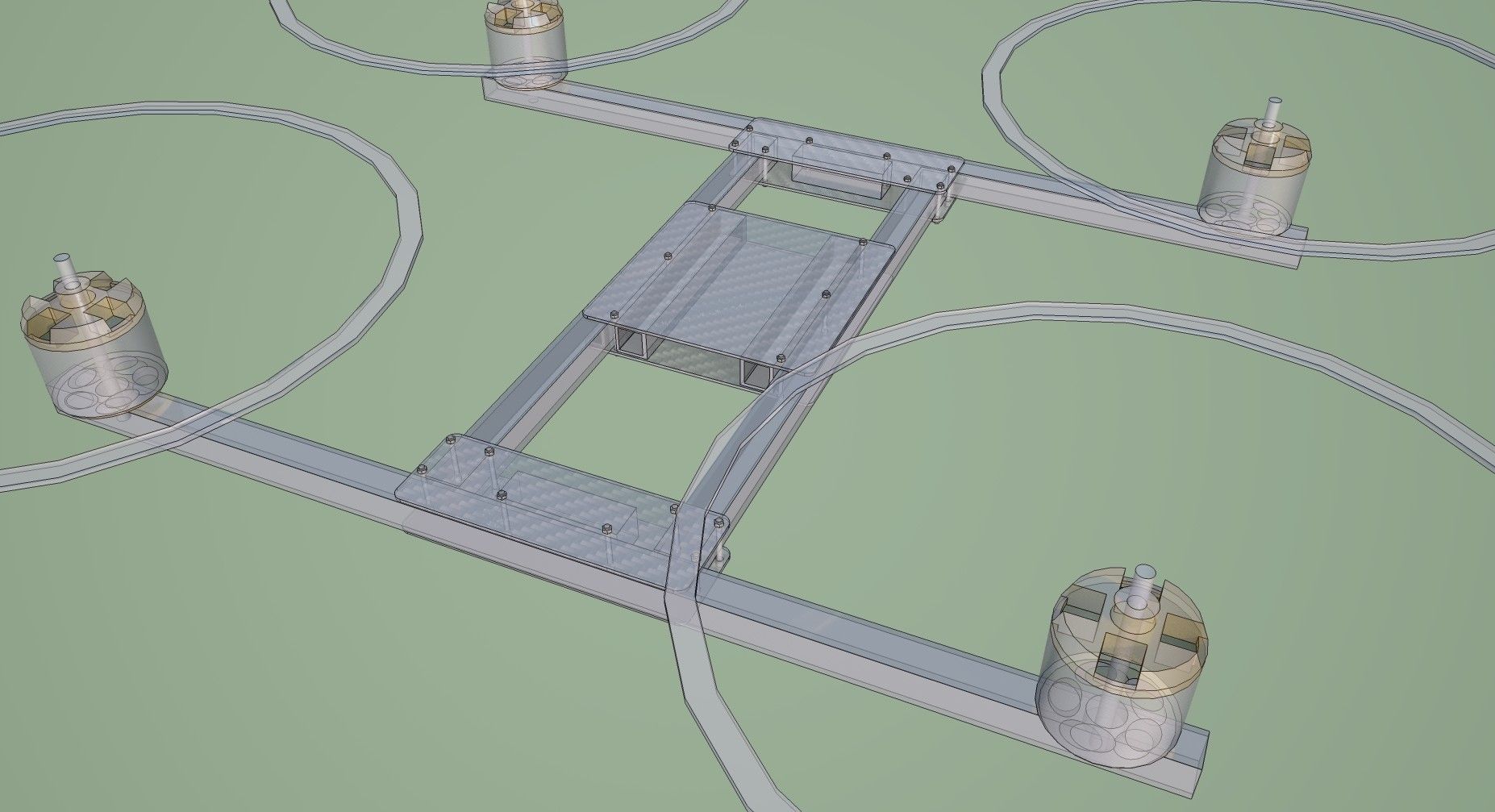I've put in a dozen or so flights over Christmas, but after that it has been pretty bleak for flight time between weather, other projects in spare time, computer games, and the wife's prerogatives. It has flown very well and quite resilient to crashes, which is most of what I had hoped for.
However, there has been oscillation with mild to moderate wind gusts which causes the flight controller to work too hard and takes away from efforts of more aggressive flying and swooping about. Despite an brief attempt a tuning the PI gains, I could not make much of a difference in the oscillation when faced with gusts of wind; to be clear though I have very little experience in gains/limits tuning.
Over on the RCGroups forum Rolf Bake, the original designer of the KK2, has chimed in that he is no longer a part of the KK project and detailed a number of issues that Hobby King did. Most of the flaws are not fatal, but I think observable with my experience to date. There is a V1.6 firmware available which may help this oscillation issue, but other people smarter than I am have taken to the code and started running away with making updates.
One of these really smart people is Steveis, which has released a hand full of new firmwares making changes along the way. His latest firmware tackles the calculations with the accelerator/gyro to help dial in auto level mode, among other changes. His updates along the way can be kept up with his blog:
http://www.rcgroups.com/forums/member.php?u=367321
Even though he has released firmware V1.12S1Beginner (which he a "KK2 look alike" for the sake of easy setup and tuning), I just flashed the prior version for the advanced tuning options (not that I know what to do much with them though). As of this evening that version is V1.11S2. To flash the KK2.1 I used the Arduino microcontroller, like I did for the KK2 in my Bat Bone build, by using the guide with the following link for the pin layout to the ISP header:
http://arduinodev.woofex.net/2013/02/11/how-to-flash-kk-2-0-using-an-arduino-uno/. From there I pulled down the latest beta version of LazyZero's AVR Programming application and used the AVRDude utility via command line. LazyZero has also been kind enough to include the hex files from Steveis' work, which made it pretty straight forward to flash with.
With the command line in windows I change the directory to the path that AVRDude is nested in, after having decompressed the runtime package. From there I use the application to acquire the hex file, then manually moved it to the same folder the AVRDude utility is in. Lastly the flash process is as simple as this one line of text in the command line: "avrdude.exe -P COM4 -b 19200 -c arduino -p m644p -v -e -U flash:w:KK2V1_1V11S2.hex:i"
Even though the last two paragraphs may seem like Greek to some people, there will be some who have a little experience on the matter and can sort through the bumps if they go the less convenient route of using an Arduino as the flashing interface. If someone with an Arduino is really trying to go through the effort of flashing, I will see about setting up a more detailed tutorial at a later date.
Since the only 3S battery I had in arms reach when flashing the KK2.1 was a partially charged 1300mAh, I still took it out for a brief flight. The wind was pretty calm with the sun being set, and I was flying by the glow of the lamp by the back door in my small back yard. But from the couple of minutes I noticed that the iQuad felt much more locked in. There almost no sway/drift when changing pitch/roll position and was a different kind of smooth feeling. I hope to get it back out tomorrow after work with a few 2200mAh batteries and really give it a run down; more feedback to follow.




